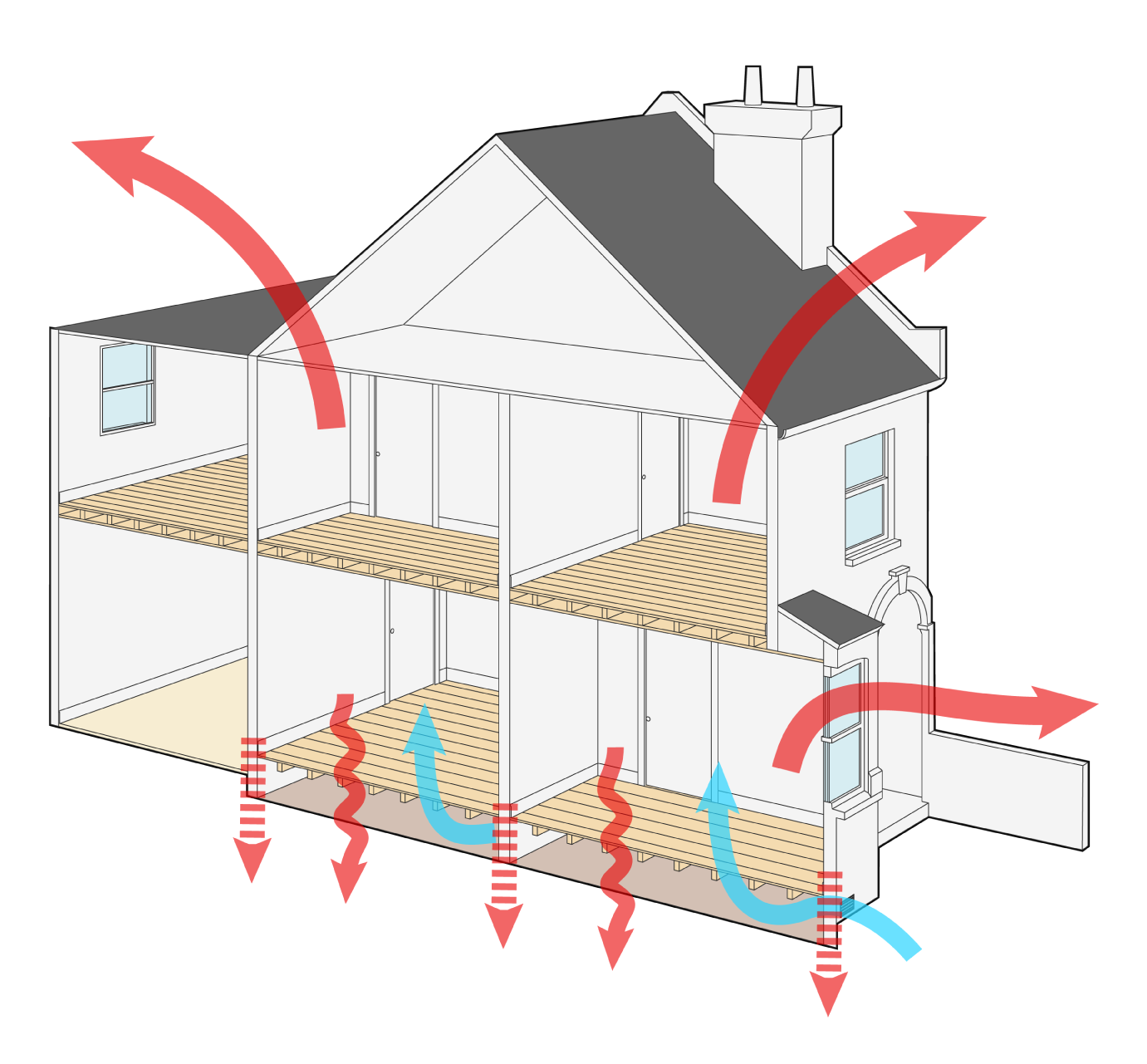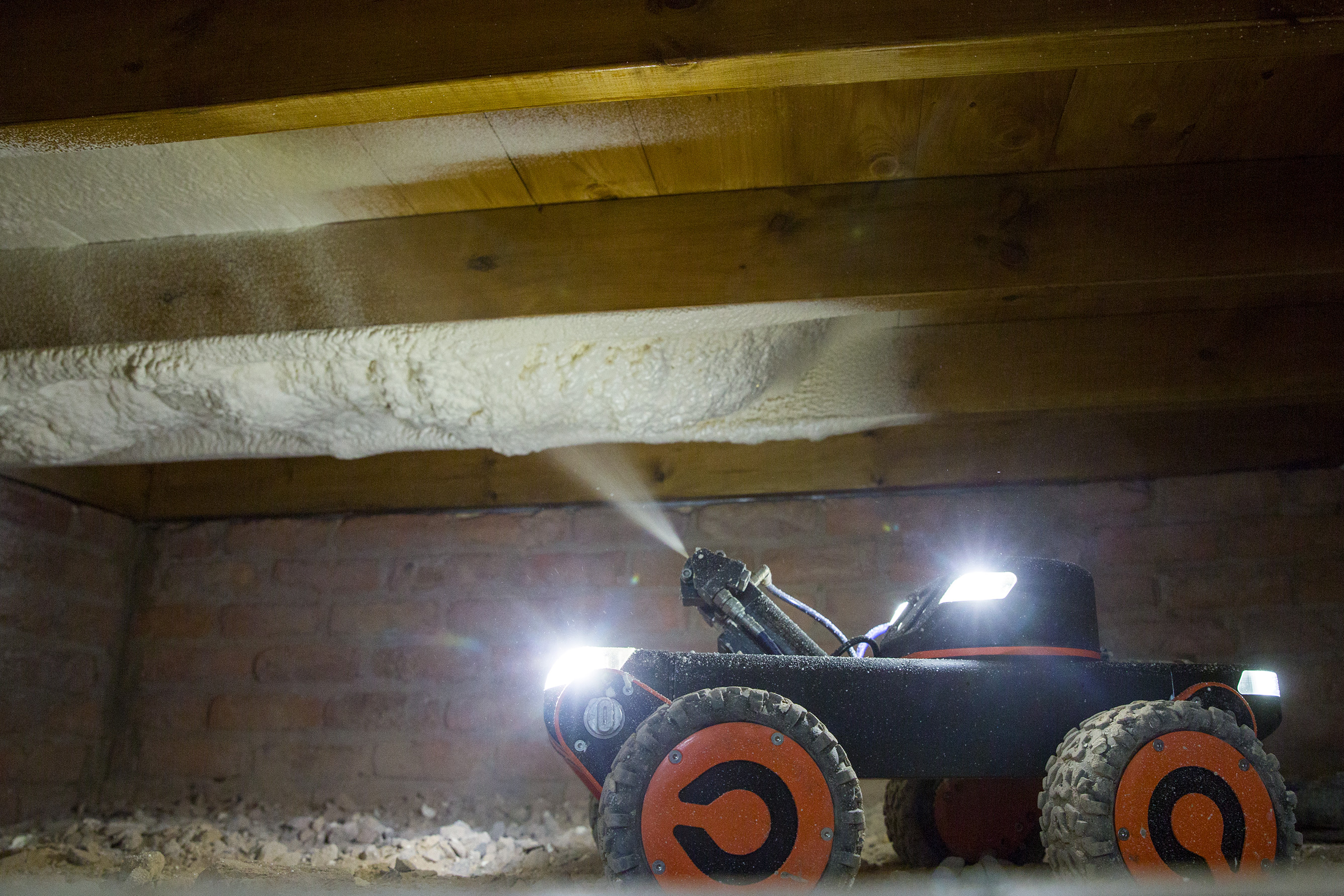What is the Best Insulation for Suspended Floors?
When it comes to home insulation, the focus often leans towards walls and lofts, with floors frequently overlooked. Surprisingly, uninsulated floors contribute to around 20% of a home's heat loss. Particularly, suspended wooden floors, built with outdated ventilation systems, not only allow cold air but also dust and mould from below, leading to uncomfortable drafts and inconsistent room temperatures.
The Challenge with Traditional Floor Insulation
Traditional methods of insulating floors involve a cumbersome and invasive process:
- Removal of furniture, carpets, floorboards, and nails.
- Installation of support nets or airtight membranes, with careful sealing of joints and perimeters.
- Manual sizing and fitting of insulation between floor joists.
- Reinstatement of floorboards and room reassembly.
This conventional approach is not just disruptive but also proves to be costly and time-intensive, with installations stretching up to two weeks and costs spiraling above £10,000. Moreover, it generates considerable waste, poses risks to workers, and is relatively ineffective, with payback periods exceeding 50 years. Additionally, typical vapor-open floor insulations fail to adequately protect the structural timber floor (STF) from moisture, compromising the structure and indoor air quality. Other disadvantages with some traditional underfloor methods include:
Performance Degradation Over Time
-
Settling and Gaps: Insulation materials can shift, creating gaps that reduce effectiveness.
-
Moisture Penetration: Absorbed moisture can degrade insulation's thermal resistance.
-
Thermal Bridging: Wooden joists can act as thermal bridges, diminishing insulation performance.
Increased Mould Risk
-
Moisture Accumulation: Permeable materials allow moisture ingress, creating a damp environment.
-
Wood Rot: Moisture can cause wood rot in joists, threatening structural integrity.
-
Inadequate Ventilation: Poor ventilation in floor voids exacerbates moisture and mould issues.
Health and Air Quality Issues
-
Mould Spores: Mould growth can spread spores, worsening indoor air quality and health.
-
Dust and Contaminants: Insulation can permit dust and other particles to enter living spaces.
Energy Efficiency Challenges
-
Inconsistent Coverage: Difficult installation can lead to uneven insulation and thermal leaks.
The Moisture Dynamics in Traditional Insulation
In traditional setups, the wood moisture content increases lower down the floor joist while vapor moves upward, creating uniform vapor pressure across the area. This arrangement concentrates the entire vapor resistance at the upper layers of the floor, such as the sheathing and flooring itself.

The Advantages of Closed Cell Spray Foam (SPF) Insulation
Contrasting traditional methods, Closed Cell SPF offers a revolutionary approach to underfloor insulation by creating an airtight and vapor impermeable barrier. This not only encompasses all structural elements but also significantly enhances the insulation's effectiveness. Benefits include:
- Reduced Humidity and Moisture Risks: By maintaining lower humidity near the wood, Closed Cell SPF reduces risks of mould and wood rot.
- Enhanced Airtightness: Decreases air infiltration, lowering the risk of microbial growth.
- Vapor Impermeability: Minimizes indoor relative humidity by preventing vapor ingress.
Impact Studies and Real-world Outcomes
A study involving a 10-home analysis by National Energy Action highlighted that indoor and void relative humidity (RH) decreased post installation of Closed Cell SPF, with the void temperature dropping significantly, suggesting reduced evaporation rates from the ground. Further investigations confirmed a sustained decrease in indoor RH by approximately 6% even a year after installation, showcasing lasting benefits.
Comparing UFI with Other Insulation Methods
When compared to other energy efficiency measures like loft and cavity wall insulation, underfloor insulation with Closed Cell SPF not only presents better initial energy savings but also maintains them over time. Contrary to loft and cavity wall insulation, which show diminishing returns over time, the airtight barrier formed by Closed Cell SPF reduces heat loss from dwellings by up to 24%.
In our case study, suspended floor insulation produced an average annual savings of £250 at 2022's energy price and an average cost of £695 per EPC point, making it one of the most cost-effective solutions when compared to other retrofit measures. This means you can expect a better return on your investment within a few years, depending on the size of the property, particularly with rising energy prices, which are expected to continue in the coming years.
Looking Ahead: The Future of Floor Insulation
With upcoming changes in RdSAP assessments in 2024, the increased airtightness provided by Closed Cell SPF underfloor insulation is expected to be recognized with higher SAP points, emphasizing its superior performance over traditional methods.
While floor insulation is often overlooked, it plays a crucial role in home energy efficiency. Closed Cell SPF emerges as a standout choice, offering robust, long-lasting benefits that go beyond simple insulation, ensuring a warmer, drier, and more energy-efficient home.


